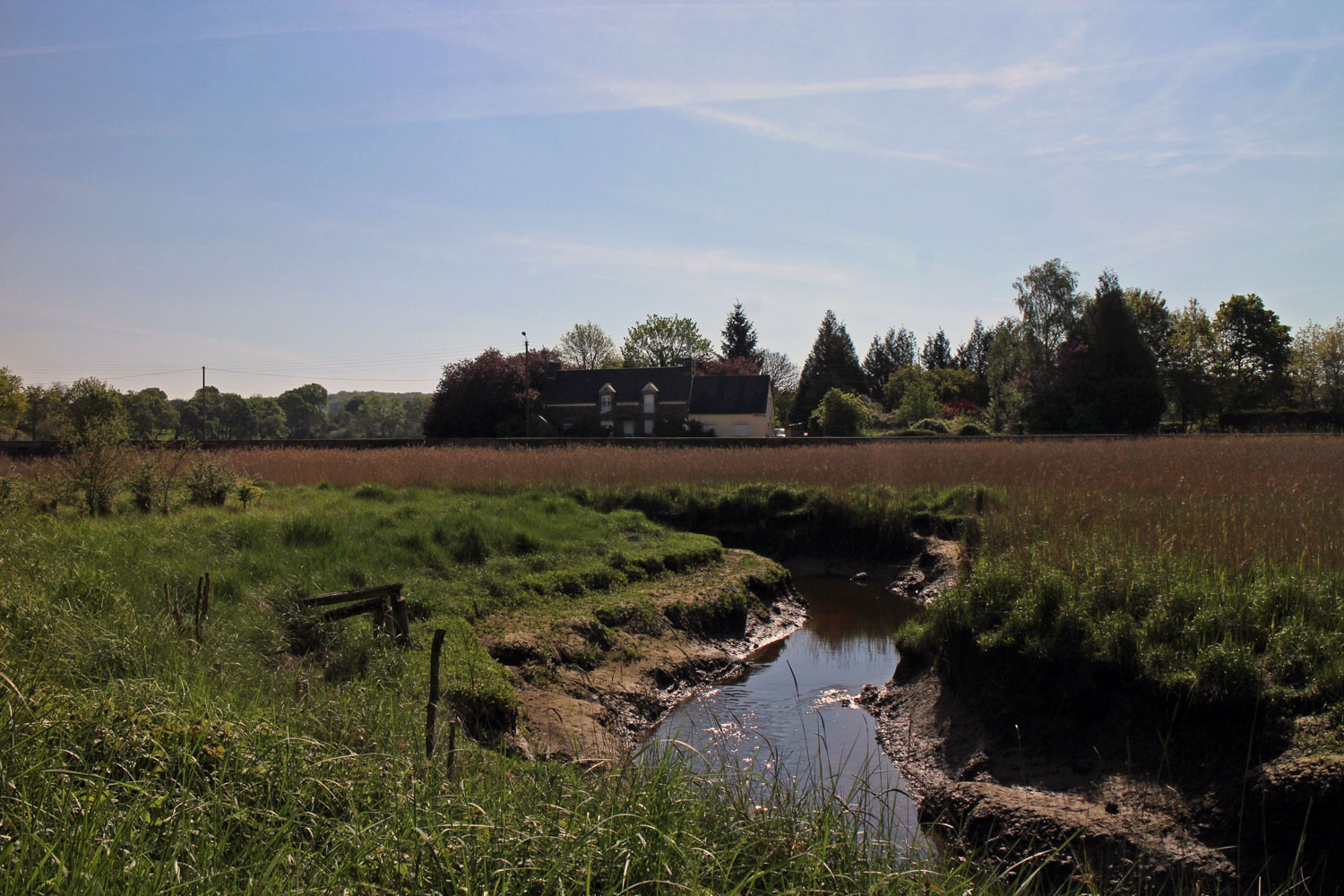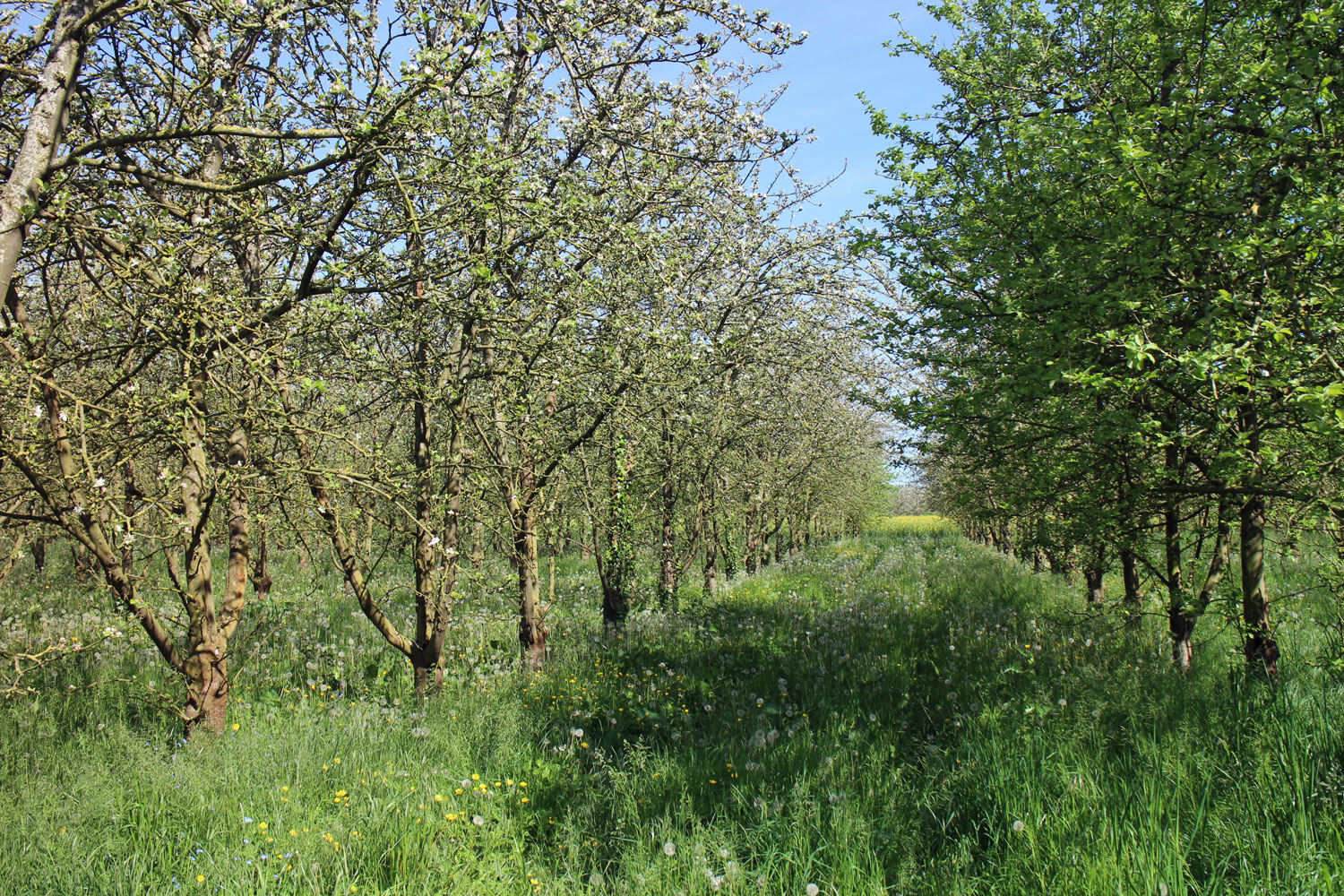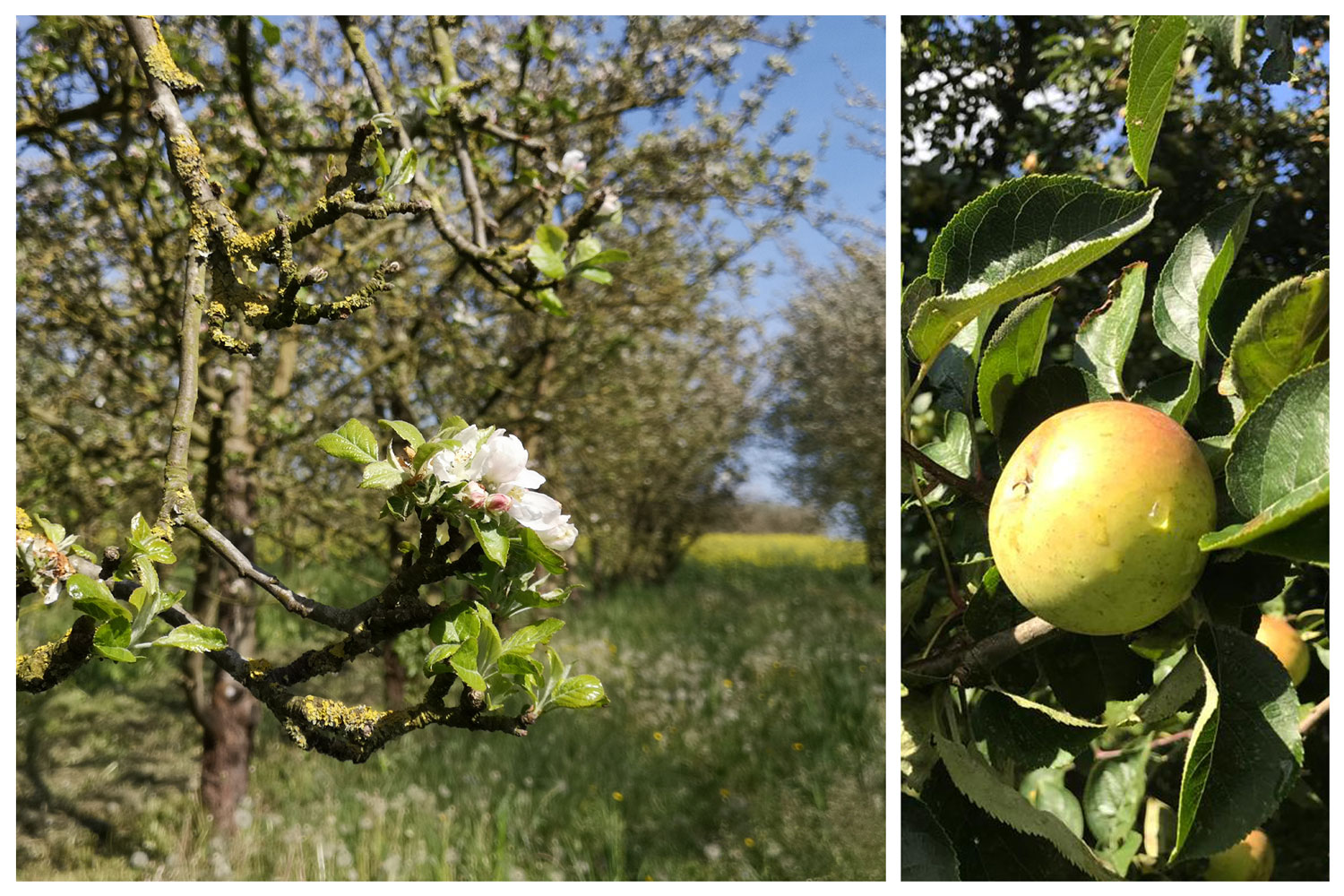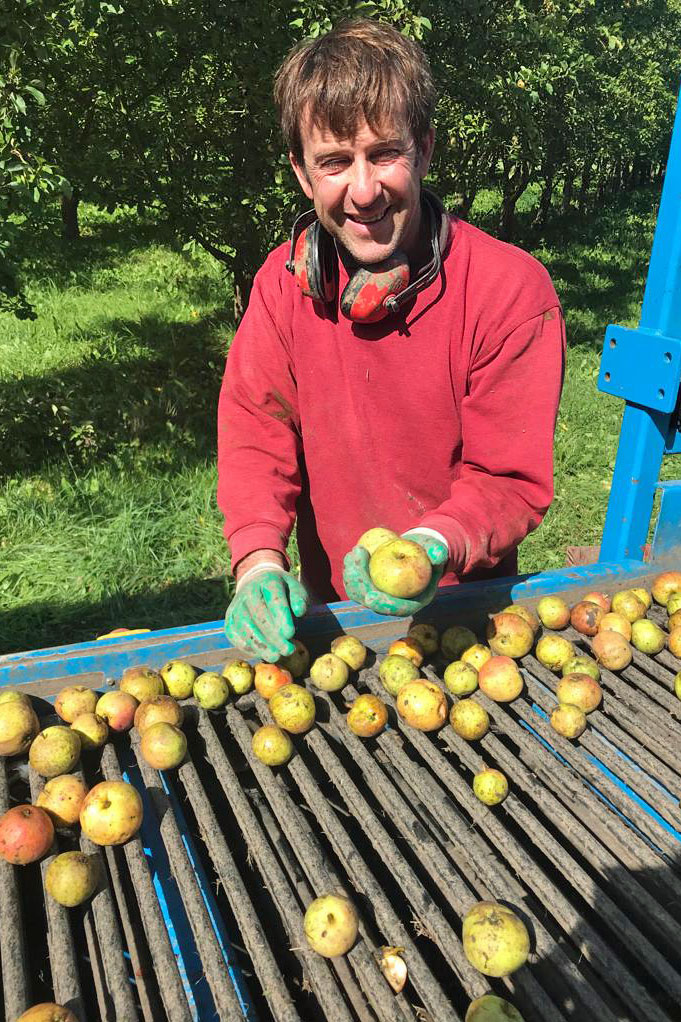This is a translation of my German blogpost Hinter den Beauty-Kulissen… ProTec Ingredia Proudly Presents: Vom Apfel zum Trend-Wirkstoff. Enjoy!
In cooperation with ProTec Ingredia // A morning in Brittany, France. We’re not directly on the coast but a little deeper into the countryside. With every tide, the river Rance and its little tributaries fill up. When the tide goes down, the water level in the river sinks as well. The landscape is dotted with picturesque little stone farmhouses which are typical for the Breton region. In the background, the apple trees are blooming.
I am sitting in a bar directly opposite the church in the small village of Pleudihen-sur-Rance. Soon, I will learn some interesting facts about apples because I am here in Brittany to follow in the footsteps of Codif’s new cosmetic ingredient Regetaste. Please join me in this Beauty Soap episode on an exciting journey of discovery!
It all begins with apples and cidre
For more than a century, Pleudihen-sur-Rance has been an important centre in the production of cidre (French apple cider). It is often called the “cider capital” of Brittany. Apple trees used to account for more than half of all agriculture in the region, today they still grow on an area of around 500 hectares.
In the bar in Pleudihen, Romuald Vallée – the CEO of cosmetic ingredients manufacturer Codif – is telling me how a few years ago, he met Jean-François Lorée from local cider manufacturer ‘Val de Rance’. Val de Rance is a well-known cooperative of apple farmers who began teaming up in the production of cider back in the 1950s. As an apple and cidre expert, Jean-François helped to select a very special type of apple for Codif: Breton cider is made from up to 40 different types of apples, including some bitter variants.
The inspiration behind the collaboration of Codif and the cider cooperative was new findings about bitter taste receptors. A few years ago, Pierre-Yves Morvan – the head of Codif‘s Research & Development (R&D) department – attended a scientific conference and he has been researching the topic of bitter substances ever since. It is truly fascinating: Our tongues are not the only body part that possesses receptors for bitter compounds – our skin has them as well. And in the skin, bitter taste receptors play an important role in cellular ageing (senescence, more about this in the next chapter). So Romuald and his team decided to use bitter cider apples as the starting point in developing new cosmetic actives.
Why cutting-edge technology and old apple variants are a great match
The selection of the most suitable apple variant for Codif’s new active ingredient Regetaste was driven by Artificial Intelligence (AI): A bioinformatic modelling approach called “Molecular Docking” helped Codif to determine which molecule was activating the bitter taste receptors in the skin particularly strongly.
And the old variant “Marie Ménard” turned out to be in the lead. First cultivated by Marie Ménard in 1910, this apple tastes sour and sweet but at the same time, very bitter. “Marie Ménard” might not be suitable for straight eating but in Breton cider, this apple is essential. The remains of the pressed apples – the apple pomace – contain most of these valuable plant compounds which can dock at the bitter taste receptors in the skin. So, let’s visit Lady Ménard (as Codif lovingly calls this unusual apple) in her natural environment!
Visiting an organic apple farmer in Brittany
I have already learned a lot about apples, cider and ingredients in the bar in Pleudihen-sur-Rance. The next step in our journey: Visiting an organic apple farmer. Marie Ménard likes to take her time when spring comes around; she only starts to bloom from early May onwards, later than other apple variants. The fragile petals are slowly stretching up from the buds – it‘s such a beautiful view, standing in the middle of blossoming apple trees!
This fruit orchard belongs to Jean Uguen, whose grandfather and father started planting the trees in 1994. It takes a while until these older apple variants grow enough apples: Marie Ménard reaches her apex at around 35 years, and then her strength decreases slowly. Besides the orchard, Jean also owns some land and 80 cows which provide the natural fertiliser for the apple trees.
Ten years ago, Jean began farming according to the principles of organic agriculture – protecting natural water resources is very important to him, as is the health of his customers and family. Organic apple cultivation isn’t particularly easy as there are certain insects and fungi that can damage the apple trees. Luckily, the older apple variants that are used for Breton cider are usually more resistant than modern apples. So Jean was even able to skip the use of copper (a pesticide that is allowed by the standards of organic agriculture) this year.
Still, he constantly keeps an eye on his apple trees so he can react quickly if the trees are attacked by insects or develop a tree disease. In these cases, the damaged trees need to be removed – even if it is an entire row of trees – and then replanted in the following year. The increasing dryness that is caused by climate change (the apple meadows are not irrigated) is also causing trouble for the apple trees. Bees help to pollinate the apple blossoms – in some areas of the orchard, the beehives are attached to the actual trees.
The apple orchard throughout the year
And how does Lady Ménard spend her year at the organic farm? In January and February, the apple trees are pruned: They can’t grow too large or expansive because the shadows cast by the leafy branches can, for example, cause the growth of mould and decay. In the springtime, the grass underneath the apple trees is mowed and each month, the trees are sprayed with different plant-based liquid blends made with, for example, garlic or stinging nettle to prevent the proliferation of parasites or diseases.
In autumn, the apples are harvested. Marie Ménard apples are ripe in October. After the apples have been collected, they are carefully sorted on large carpets. Usually, the apples are harvested in the morning and then the pressing begins in the afternoon. The next step in our apple discovery journey will be a visit to the cooperative which manufactures the cider from the apples.
© Photos No. 3 und 4 were provided by Codif for this article.
The ingredients from Codif are available to trade customers through the German distributor ProTec Ingredia.
In the next chapter of my Beauty Soap, we’ll continue following Lady Ménard’s first appearance in the cosmetics industry. Stay tuned!





